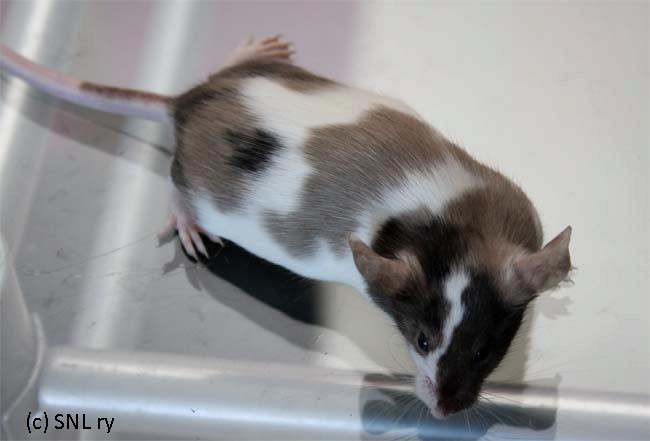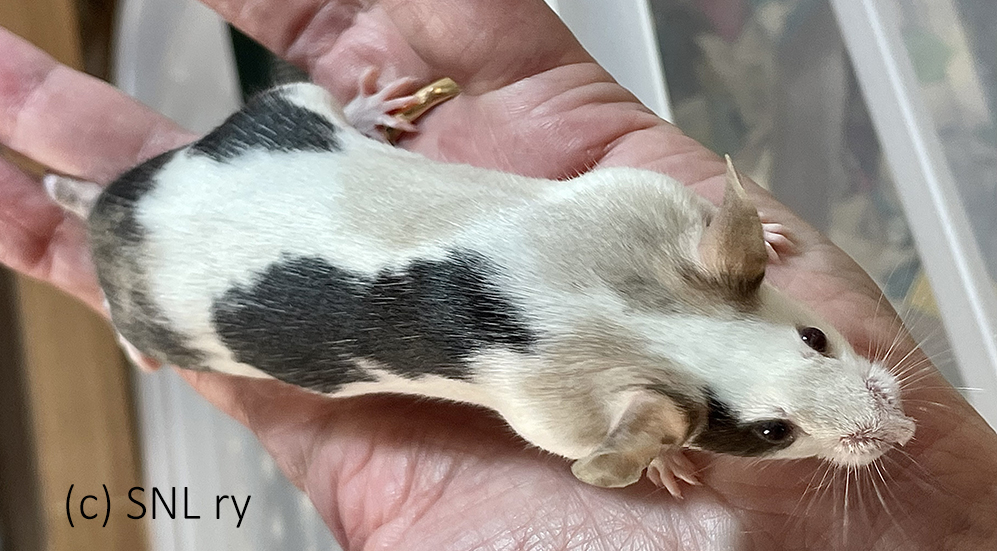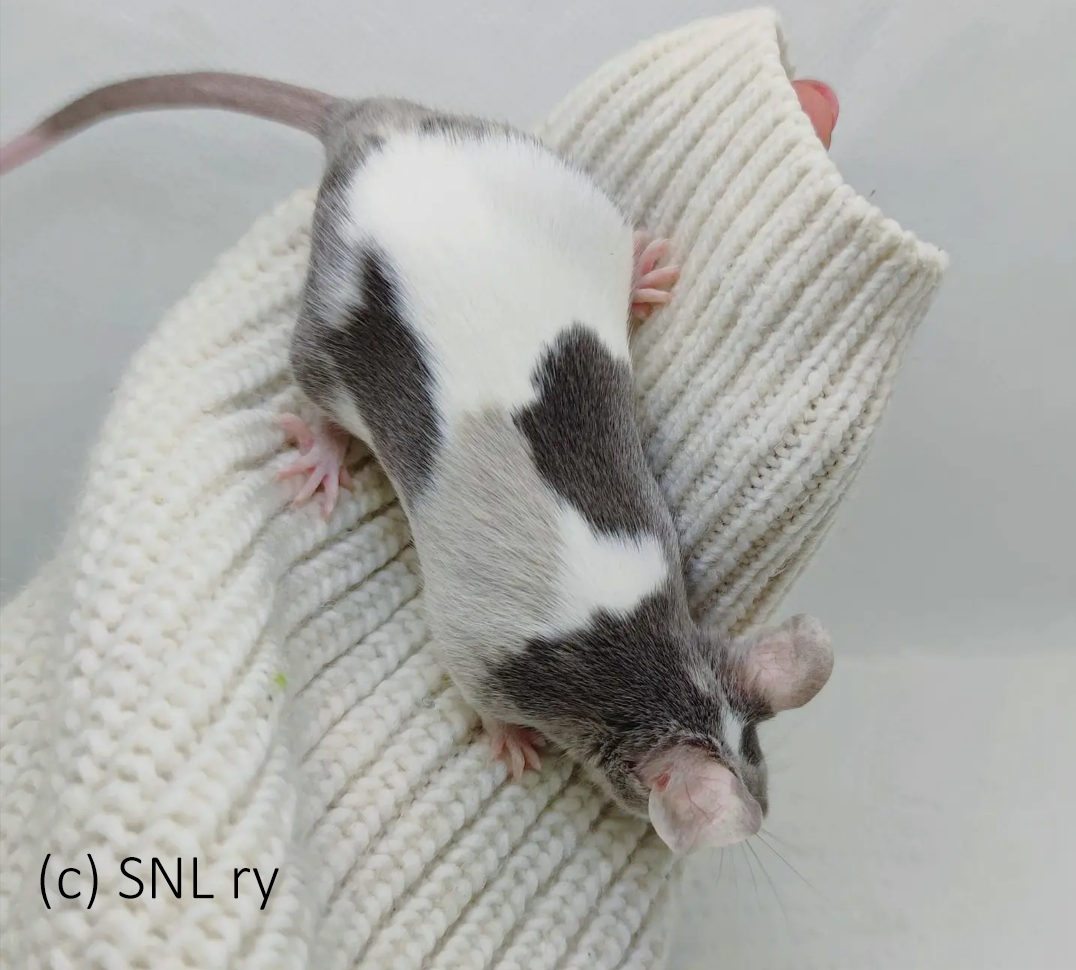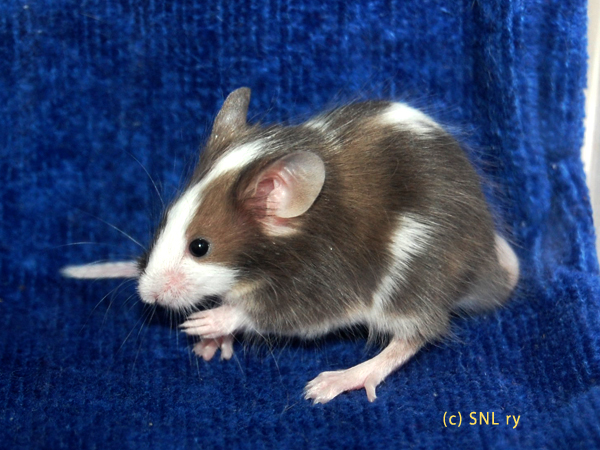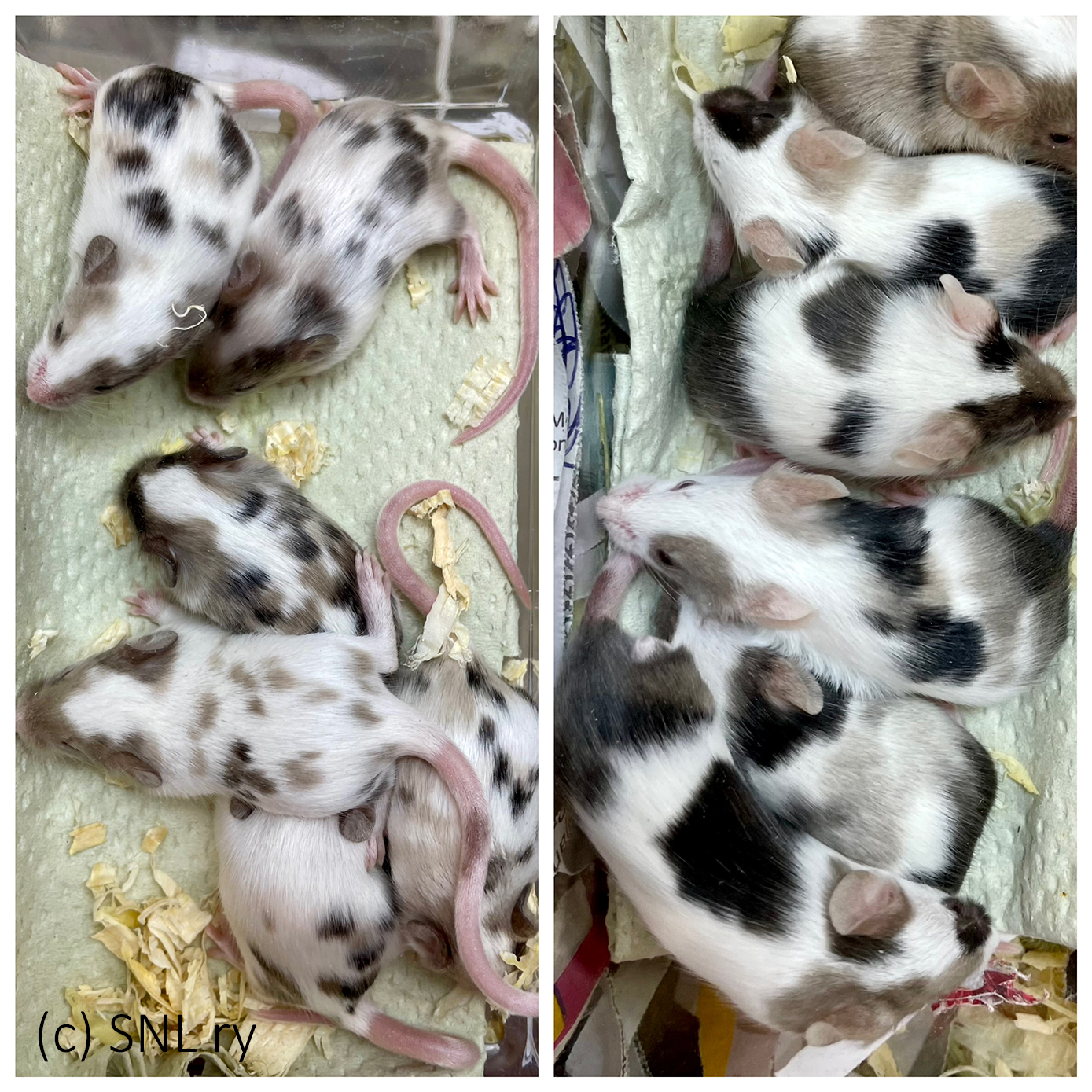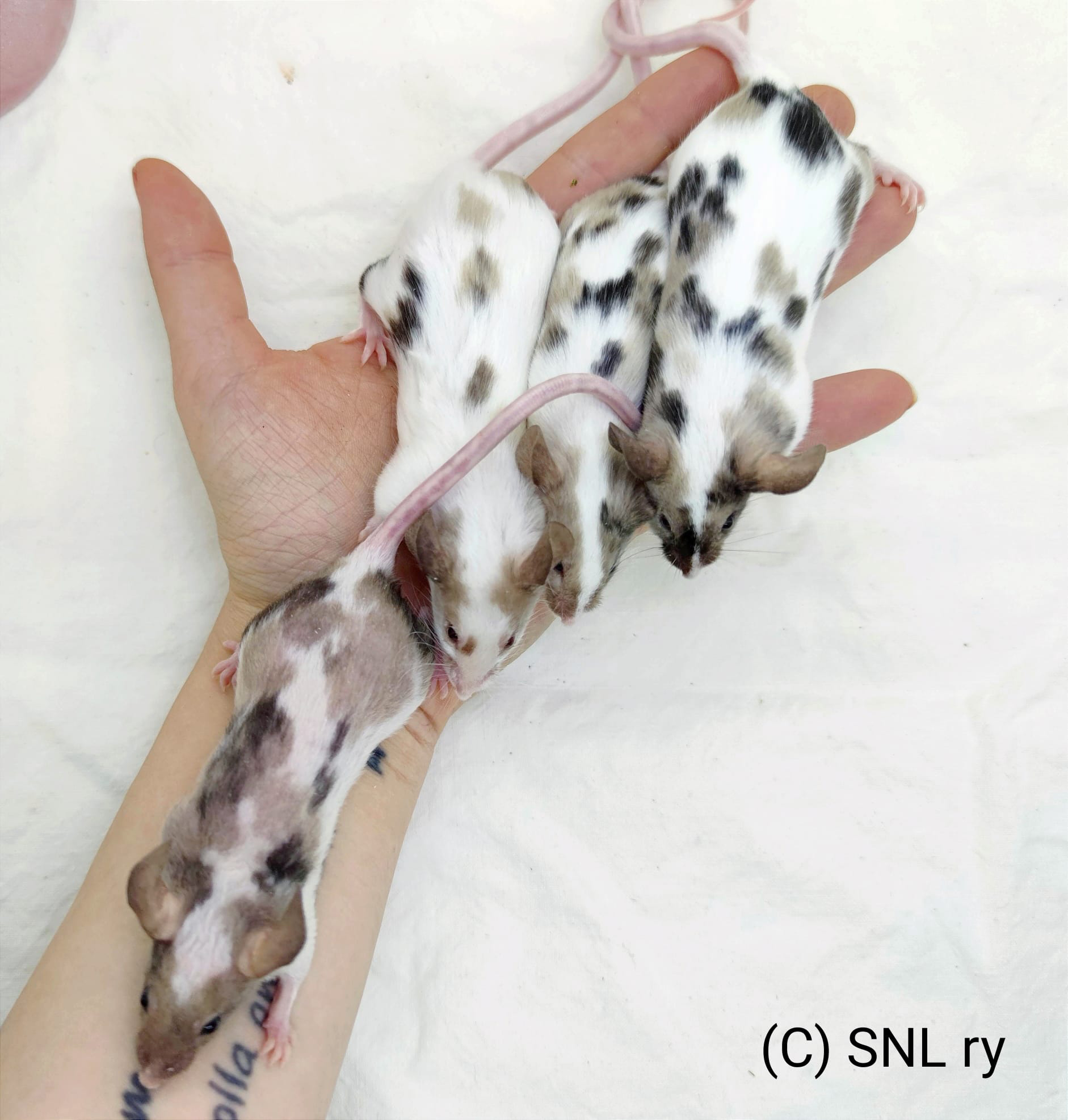Varieties
Marked
Tricolor (*/tri)
Spl/+ c-recessives (Splashed), or
Va (varitint waddler), or
Ay/at U/* s/s (Sable with recessive white spotting), or
pun s/s (pink-eye unstable + recessive white spotting), or
cm/cm s/s or cm/cch s/s (chinchilla mottled + recessive white spotting), or
pm1/2/p s/s (pink-eye mottled + recessive white spotting)
"A tricolor mouse is to have three contrasting patches of colour on the back and sides. The patched should be well balanced in relation to each others and not resemble any other marked variety. Patches of colour on the undersides and belly to be adjudged an added attraction. Brindling of patches to be adjudged a fault."
Breeding information below the pictures.
Note: This article is old and waiting to be rewritten.
Quick Look
Tricolour used to be an extremely rare variation, even in the country of origin, UK. Then along came the Splashed gene and things changed.
The methods of breeding tricolours are many, most of them difficult and/or depending on very hard to get genes. There is one gene called 'variatint waddler'. This gene produces uneven dilution of coat colour, causing black /grey/ white or brown /beige /white colouring. According to standard the stripes caused by the gene are considered a fault. Major problem with using variatint waddlers are their health. Waddlers are deaf due to abnormalities in the inner ear and they walk in circles.
Another, healthier but not really easier method, is sable Ay/at U combined with the recessive spotting s/s. The two colours of a sable (red and very dark brown) has the tendency of "clumping" in the presence of s/s.
Pink-eye unstable gene pun gives mice with undiluted and pink-eye diluted spots. However, this gene is unstable, as the name implies, reverting often to wild type.
In homozygous form (cm/cm) or with chinchilla gene (cm/cch) chinchilla mottled gives mice with patches of chinchilla-diluted colour and colour resembling that of a cch/c mouse. This gene is easier to work with than those above and with s/s can give nice Tricolors.
Pink-eye mottled genes pm1 and pm2 (they have identical effects) give non-diluted and pink-eyed diliuted hais intermingled, when heterozygous with p.

